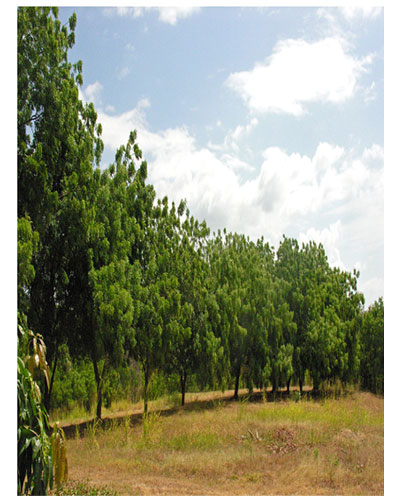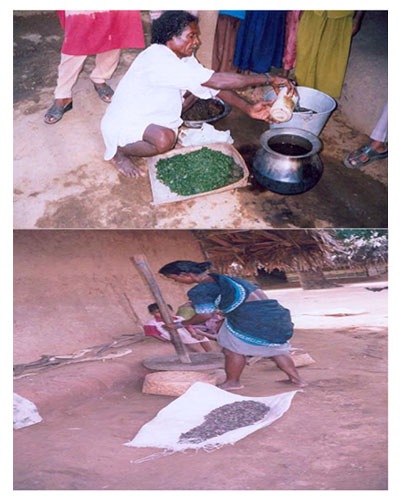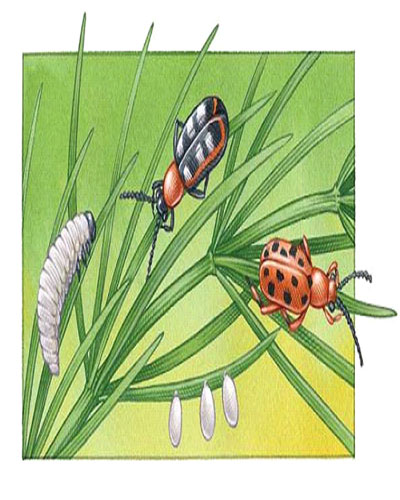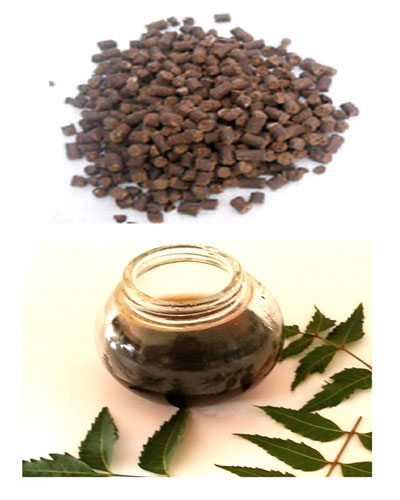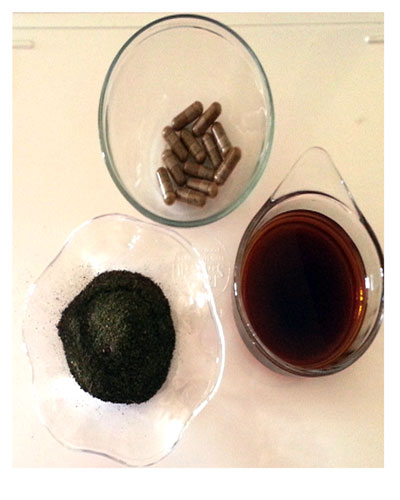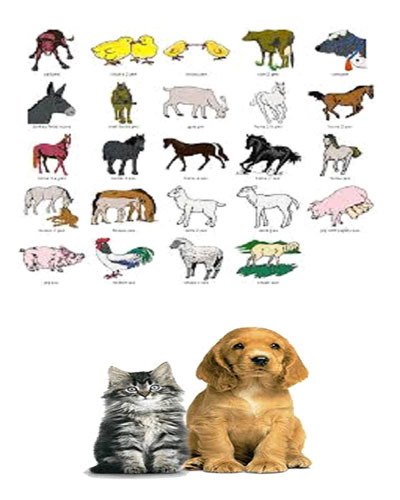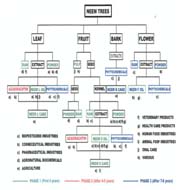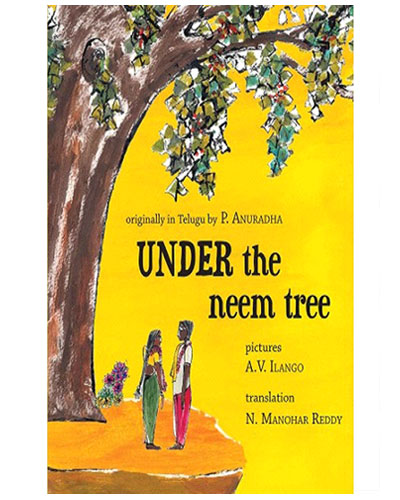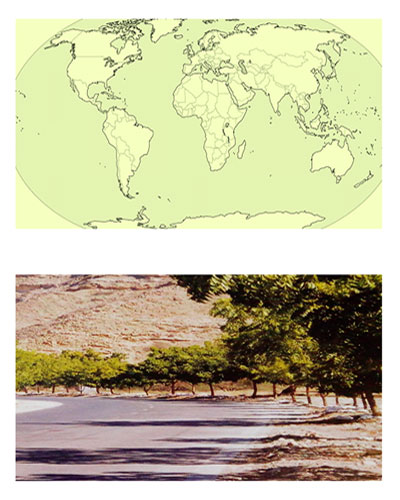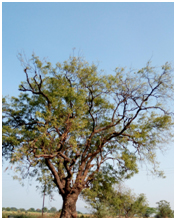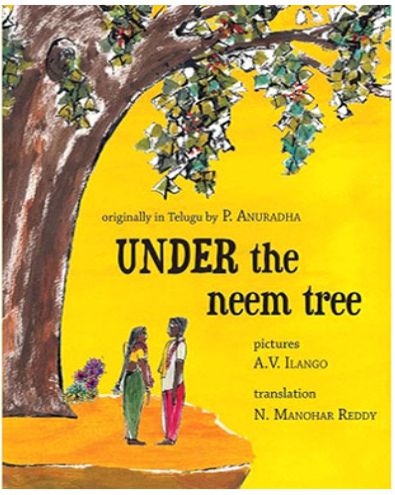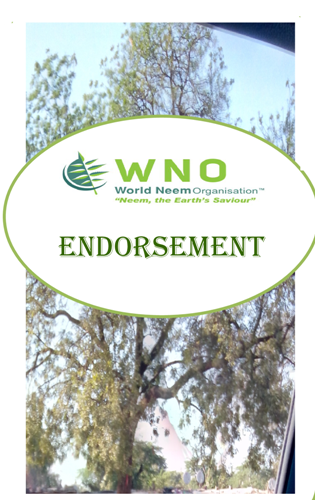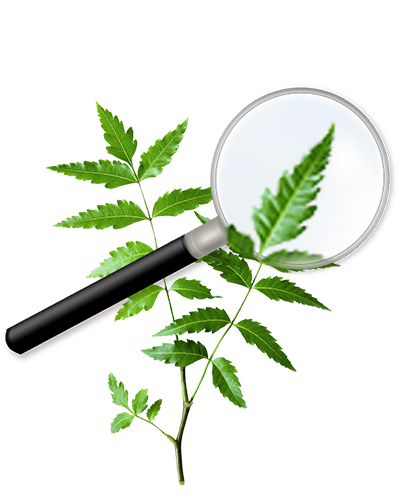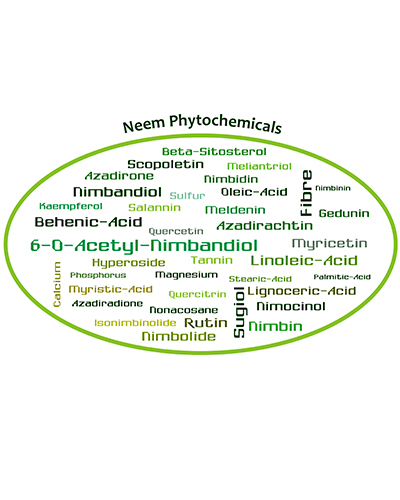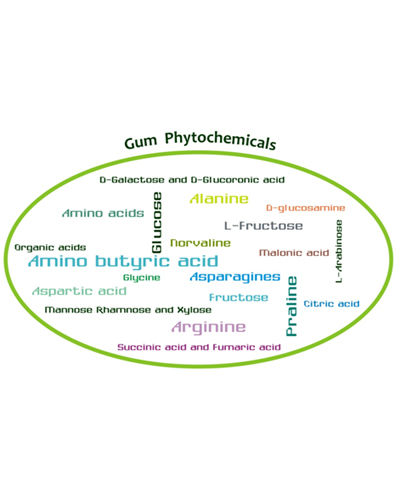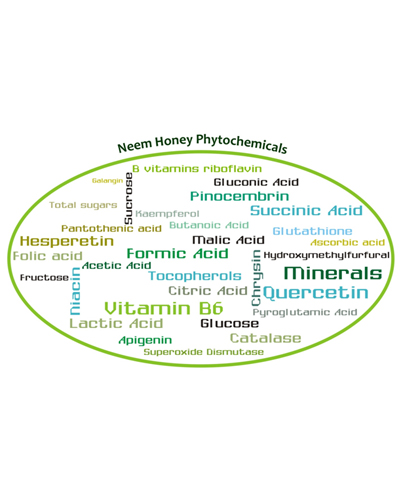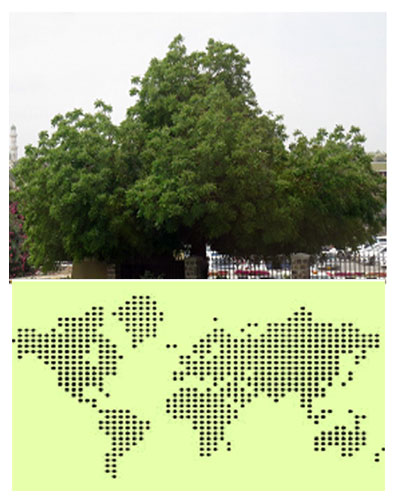Honey
Honey is produced in the beehive by bees using pollen and nectar of the innumerable flowers. Honey is a combination of pleasant fragrance, sweetness and warmth. It is a sweet unique gift of the nature to the mankind. It is the nature’s medicine cupboard. When the bees collect the nectar, it contains mainly sucrose, which undergoes through chemical changes in the honey sack.
The composition of honey is affected by its plant source the type of bees and weather conditions. Thus, there is no stable chemical composition for honey; but it is mainly composed of glucose, fructose and water, small amounts of disaccharides and other constitutes such as organic acids, proteins, minerals and phytochemicals.
Carbohydrates comprise the major portion of honey - about 82%. The carbohydrates present are the monosaccharides fructose (38.2%) and glucose (31%); and disaccharides (~9%) sucrose, maltose, isomaltose, maltulose, turanose and kojibiose. There are also some oligosaccharides present (4.2%), including erlose, theanderose and panose, formed from incomplete breakdown of the higher saccharides present in nectar and honeydew.
Honey contains a number of enzymes, including invertase, which converts sucrose to glucose and fructose; amylase, which breaks starch down into smaller units; glucose Oxidase, which converts glucose to gluconolactone, which in turn yields gluconic acid and hydrogen peroxide; catalase, which breaks down the peroxide formed by glucose Oxidase to water and oxygen; and acid phosphorylase, which removes inorganic phosphate from organic phosphates.
Honey also contains eighteen free amino acids, of which the most abundant is proline. Honey contains trace amounts of the B vitamins riboflavin, niacin, folic acid, pantothenic acid and vitamin B6. It also contains ascorbic acid (vitamin C), and the minerals calcium, iron, zinc, potassium, phosphorous, magnesium, selenium, chromium and manganese.
However, honey composition varies depending on the types of plants from which the bee consumes nectar. Nevertheless, nearly all honey worldwide contains similar types of phenolic acids, including caffeic, ellagic, ferulic and p-coumaric acids.
The main group of phytochemicals in honey are the phenols and flavonoids like apigenin, chrysin, galangin, hesperetin, quercetin, Kaempferol and pinocembrin which is unique to honey and bee propolis. Ascorbic acid, catalase, selenium, tocopherols, superoxide dismutase (SOD), catalase (CAT), and reduced glutathione (GSH) are also present. The darker honey the greater its antioxidising properties.
Honey also contains organic acids such as acetic, butanoic, formic, citric, succinic, lactic, malic, pyroglutamic and gluconic acids, and a number of aromatic acids. The main acid present is gluconic acid, formed in the breakdown of glucose by glucose Oxidase. Honey also contains hydroxymethylfurfural, a natural product of the breakdown of simple sugars below pH 5.
Neem Honey
Neem honey is single-origin Monofloral honey made from the flowers of Neem trees. Neem honey is not produced by domesticated honey bees, but by wild bees. The Neem Honey is collected from the grove of the flowering Neem trees during the months of March-May. Raw Neem honey is different from the other honeys in color being much lighter and greener Water White colored (Maryam Mohammed Rashed Mohammed Alyammahi, 2018) with distinctive essence of honey. Neem Honey is slightly bitter in taste and also contains Neem flavour. Neem honey is in demand for its medicinal value. Its chemical composition is similar to many of the other honeys.
Neem Honey contains Fructose 41.0%, Glucose 27.9%, Sucrose 5.9% and Total sugars 74.8%. Minerals in Neem Honey mg/kg Calcium(Ca) 150, Cruomium(Cr) less than 0.005, Copper (Cu) 1.6, Iron ( Fe) 3.3, Potassium ( K) 960, Magnesium ( Mg) 62.3, Manganese(Mn) 0.39, Sodium (Na) 138, Phosphorus( P) 64, Sulfur(S) 84,Zinc(Zn) 8.0. (Maryam Mohammed Rashed Mohammed Alyammahi, 2018)
Neem Honey’s total Phenolic content is 98.5 mg/100gms, total Flavonoids content 4.93 mg/100gms. Proline content is 764.1 mg/100gms. RSA( Radical Scavenger activity) 6.49 mg/100gms, AEAC( Ascorbic acid equivalent antioxidant content) 37.48 mg/100gms, QEAC(Quercetin equivalent antioxidant content) 8.39 mg/100gms. (Maurya S. et al, October-November 2015)
HMF (hydroxymethylfurfural) in NEEM Honey is 0.39 mg/100gms ((Maryam Mohammed Rashed Mohammed Alyammahi, 2018)
Neem honey contains no trace of azadirachtin. Its viscosity is low (Singh,
1962; Crane et al., 1984).
Honey a unique and oldest medicine
Honey is regarded as a Miracle Food, in folklore, and it appears in most stories of great age. In the most ancient written records, the usage of honey is referred as a medicine. Physicians of many ancient races of mankind prescribed honey for a wide variety of ailments. In combination with other herbs and on its own honey was used to treat wounds and diseases of gut by the ancient Egyptians, Syrians, Chinese, Greeks, and Romans.
The Muslim prophet, the great Mohammed, recommended the use of honey for the treatment of diarrhoea. The great Hippocrates, the father of the European medicine, believed that the honey bestowed long life. Aristotle (384 to 322 BC), said honey is the sky’s perspiration or sweet nectar trickling down from the air. Honey has a unique place in the poems of Hafiz in the Arabian literature. In India, the value of the honey has been accepted since time immemorial. It is well mentioned in the great Vedas that people were taking honey with spirituous liquor. In the Ayurveda, honey is regarded as Yogavahi, which means, it increases the curative power of the medicine with which it is combined.
The tiny noble honeybee has richly blessed us with an extra ordinary source of wellness and healing from her hive, the nature’s medicine cupboard.
Neem Honey has great medicinal value and is a great source of solar energy. Neem Honey is a “rasayanas”. It is aphrodisiac.
Since ancient time Neem honey has been used as a digestive aid as well as for its antibacterial and anti-inflammatory properties.
This variant of honey finds many applications in Ayurvedic treatments. Neem honey is highly esteemed in AYURVEDA and used to treat high blood pressure, diabetes, skin conditions, periodontal and throat infections, allergies, treatment of rheumatism, chronic sores and indolent ulcers.
Neem Honey promotes the body and digestive health. Neem Honey is a powerful antioxidant, balances sugar levels, calms the nerves, and strengthens the immune system.
Neem honey is anti-bacterial, anti-viral and anti-fungal. It is extremely useful to treat respiratory problems like asthma and bronchitis. It dislodges phlegm. Honey has been hailed as a universal panacea as an excellent gargle.
Neem honey increases immunity against cold and flu. It is a great antibiotic thus, is useful to treat cold and sore throat as it coats the throat and reduces irritation.
Neem honey shares most of its health claims with many of the world’s quality honeys. Neem Honey is filled with the goodness of Neem and honey.
Opened Honey comb around a Neem branch
Honey is very good for all types of wounds. Neem Honey is great for skin problems like acne and scars. Neem Honey gives good results on a wide range of wounds like abscesses, surgical wounds, traumatic wounds, abrasion wounds (especially those contains particles of road surface), burns, decubitus ulcers, and leg ulcers (venous and diabetic).Honey is very effective in cleaning up infected wounds. It is effective in starting the healing process in non-healing wounds. Burn wounds if treated with Honey do not become colonized (infected) by bacteria and heal quickly. Honey is generally soothing and relieves pain, when applied to open wounds.
In vitro studies of bacteria cultured from the wounds showed that undiluted honey not only failed to sustain growth of the bacteria (Proteus mirabilis,
Ps. aeruginosa, E.coli, Streptococcus faecalis, Clostridium perfingens and S. aureus), but actually killed them.
The in vitro anti-fungal activity of honey has been also tested on Candida albicans, C. pseudotropicalis, C. stellatoidea and C. tropicalis. They were all found to be susceptible.
Honey has a significant antioxidant content that works as anti-inflammatory agent and reduces inflammation. Honey helps skin regeneration by the promoting the formation of clean healthy granulation tissue and epithelialisation of the wounds. Honey will also have a nutrient effect on regenerating tissue because it contains a wide range of amino acids, vitamins and trace elements in addition to large quantities of readily assimilable sugars. It works wonderfully for long and deep cuts which may require stitching.
In villages of Arab countries people apply Honey inside such cut till cut gets filled with honey and then a tight cotton bandage tied over it. The bandage is opened after one week to ten days. It is difficult to make out whether there was any cut. You can also try this. I did it many times and it really works.
The Holy Hadith records the Muslim prophet Mohammed instructing a man afflicted with diarrhoea to take honey. The Roman physician Celsius, c. 25 AD, used honey as a cure for diarrhoea. South African researchers have also found that honey killed deadly diarrhoea causing germs. Diarrhoea germs could not survive for more than 10 hours.
Honey has a traditional folklore usage for the treatment of peptic ulcers. Oral dosage of honey is successfully used in modern times to treat upper gastrointestinal dyspepsia, gastritis, duodinitis, and ulceration particularly in Russia and Arabian countries. Honey also has a preventive action, protecting the stomach from ulceration. A team of researchers from the University of Waikato in Newzealand studied whether honey could benefit gastric ulcers caused by H. pylori bacterium. They observed that within three days honey stopped the growth of bacterium colonies. It has a beneficial effect on indigestion, colitis and acidity. It cures constipation.
A clinical study of honey treatment in infantile gastroenteritis was reported by Haffejee and Moosa. They found that by replacing the glucose (111 m mol/l) in the standard electrolyte-containing oral rehydration solution recommended by the World Health Organisation/UNICEF, as well as the solution of electrolyte replaced with 50 ml/l honey, the mean recovery times of patients (aged 8 days to 11 years) were significantly reduced.
In ancient time honey from Attica had a special reputation as a curative substance for eye disorders. Aristotle wrote in 350BC in section 627 a 3 of Historia Animalium that white honey is good as a salve for sore eyes. In India lotus honey (from lotus flower) was said to be a panacea for eye diseases. Honey is also a traditional therapy in Mali Islands for measles (a viral infection), it being put in the eye to prevent the scarring of the cornea which occurs in this infection. The use of honey to treat blepharitis (inflammation of the eyelid), catarrhal conjunctivitis, keratitis (inflammation of the cornea), syphilitic keratitis, corneal ulcers, and injuries to the cornea and lime burns of the cornea have also been reported. So, honey has great usage in ophthalmology.
Honey reduces fat and increases virility. It dislodges phlegm. Honey has been hailed as a universal panacea as an excellent gargle. In the Moscow hospital in an experiment TB patient were given 580 to 750 Gms. of honey daily. They gained weight and were relieved from cough to a greater extent. Their haemoglobin percentage was also increased.
Honey is an ideal food for the heart and liver disorders. It is also helpful in disturbed urination. Honey kills the Para-typhoid and typhoid germs within 24 to 48 hours. It can be used in the preparation of the oral rehydration solutions in place of sugar to prevent dehydration especially in infants and babies. It is also good for rheumatism and arthritis. It induces good sleep.
There is a need for sweeteners in the diabetic diet to improve overall dietary compliance. Since fructose is absorbed more slowly from the gastrointestinal tract than glucose and is rapidly taken up by the liver, blood sugar levels raise only minimally after fructose ingestion (Crapo PA et al, 1080. Bornet et al demonstrated the sucrose or honey at breakfast have no additional acute hyperglycaemic effect over and isoglucocidic amount of bread in type II diabetic patients. In addition, a clinical study by Katsilambros et al, indicated that honey could be a suitable sweetener for the type II diabetic diet since fat-rich foods added to honey result in higher triglyceride and insulin serum concentrations.
It is the ultimate skin moisturizer, leaves skin baby soft. It clears up facial blemishes and acne caused by cosmetics or allergies. It is good for hair and scalp treatment. You will be amazed at your crowning glory. It cleans teeth, mouth and dentures and stops bleeding gums.
One common fact worldwide is that the most long-lived people are regular users of honey. To cut your doctor’s bill goes for Api-therapy (medicine from bees i.e. honeys). Last but not the least honey shouldn’t be heated up any time or taken in any hot liquid.
John Anderson, a lecturer in beekeeping at the University of Aberdeen, says ‘keep bees and eat honey, if you want to live long’. Beekeepers live longer than anybody else does.
References
Ahmed AK et al. Honey-medicated dressing: transformation of an ancient remedy into modern therapy. Ann Plas Surg 2003; 50(2):143-7, discussion 147-8.
Ali AT, Chowdhury MN, Al-Humayyd MS; Inhibitory effect of natural honey on Helicobacter pylori; Tropical Gastroenterol 1991; 12:139-143.
Ayyar T V R and Ramachandran S; Bees and beekeeping in south India; Madras Agricultural Journal, 1934; 22: 58-71.
Aristotle (1910); Historia Animalium; Oxford University; Oxford, UK.
Bornet T, Haardt MJ, Costagliola D, Blayo A, Slama G. Sucrose or honey at breakfast have no additional acute hyperglycaemic effect over an isoglucidic amount of bread in type II diabetic patients. Diabetologia 1985; 28:213.
Chatterjee A, Mahalanabis D, Jalan KN; Oral rehydration in infantile diarrhoea, controlled trial of a low sodium glucose electrolyte solution; Arch Dis Child, 1978; 53:284-289.
Crapo PA, Kolterman OG, Olefsky JM; Effects of oral fructose in normal diabetic and impaired glucose tolerant subjects; Diabetic Care 1980; 3:575.
Crane, E; Honey: A comprehensive survey; New York, USA, 1975: Crane Russak and Company.
Crane E, Walker P and Day R; Directory of important World Honey Sources; International Bee Research Association, 1984, London
Cooper RA, Molan PC & Harding KG; Antibacterial activity of honey against strains of Staphylococcus aureus from infected wounds; J R Soc Med 1999; 92(6):283-5.
Efem SE; Clinical observations on the wound healing properties of honey; BJS 1988; 75(7):679-81.
Haffejee IE, Moosa A; Honey in the treatment of infantile gastroenteritis; Br Med J, 1985; 290:1866-1867.
Jull A, A R, & N W; Honey as a topical treatment for wounds. The Cochrane Database of Systematic Reviews, 2018; 8(4), CDOOS083
Kingsley A. The use of honey in the treatment of infected wounds: case studies. BJN 2001; 10(22 Suppl):S13-6, S18, S20.
Lusby PE, Coombes A & Wilkinson JM; Honey: a potent agent for wound healing? JWOCN 2002; 29(6):295-300.
Mann JI; Simple sugars and diabetics; Diabetic Med 1987; 4:135.
Manisha D & Shyamapada M; Honey: its medicinal property and Antibacterial activity; Asian Pacific Journal 0f Tropical Biomedicine, 2011; 1(2), 154- 160.
Maryam Mohammed Alyammahi; Physicochemical Characteristics of Mono floral Emirati Honey; Food Science Theses, 2018; 4.
Meo S A, AI-Alsiri, S A Mahesar, A. L. & Ansari M J (20 1 7). Review Role of honey in modern medicine; Saudi Journal 0f Biological Sciences, 2017; 24(5), 975-978.
Molan PC; The role of honey in the management of wounds; J Wound Care 1999; 8(8):415-8.
Moore OA et al.; Systematic review of the use of honey as a wound dressing; Compl & Alternat Med 2001; 1(1):2.
Nair, P. K. K. 1964. A pollen analytical study of Indian honeys The Journal of Indian Botanical Science, 43(2), 179-189
Pasupuleti Visweswara Rao, Kumara Thevan Krishnan, Naguib Salleh, Siew HuaGan; Biological and therapeutic effects of honey produced by honey bees and stingless bees: a comparative review; Revista Brasileira de Farmacognosia, September–October 2016; Volume 26, Issue 5, , Pages 657-664
Phadke R P; Studies on Indian honeys; Indian Bee Journal, 1967; 29: 1-3.
Phadke R P; Physicochemical composition of major unifloral honeys from Mahabaleshwar (Western Ghats); Bee Journal, 1962; 24: 59-65.
Saxena S, Gautam S and Sharma A; Physical, biochemical and antioxidant properties of some Indian honeys; Food Chemical, 2010; 118: 391-397.
Singh S; Beekeeping in India; Indian Council of Agricultural Research, 1962; New Delhi.
Subrahmanyam M; Topical application of honey in treatment of burns; BJS 1991; 78(4):497-8.
Flowering Neem Tree with a Honeycomb (From Internet)
University of Waikato; Waikato Honey Research Unit. http://www. honey.bio.waikato.ac.nz/evidence.shtml.
World Health Organisation, Treatment and prevention of dehydration in diarrhoeal diseases; A guide for use at the primary level. Geneva: WHO 1976; 1-13.
Dr Nirrmala Kotharii
Director & General Secretary, World Neem Organisation
Managing Director, Neem Wave Exhibitions LLP


